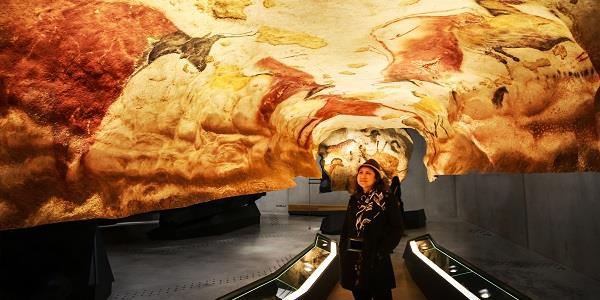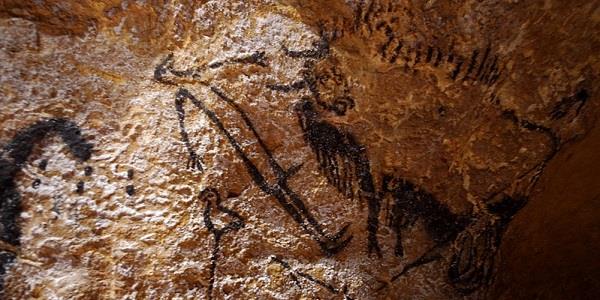
Of all the prehistoric archaeological treasures to be found in the Dordogne's Vézère Valley, the Caves at Lascaux are surely the most significant.
In 1940 four French teenagers discovered what quickly became renowned as one of the greatest repositories of prehistoric cave art to be found anywhere in the world: the Lascaux Caves, in the east of the Dordogne region and easily reachable from the holiday village of Constant.
Over 600 parietal wall paintings cover the interior walls and ceilings of the caves. The paintings primarily represent large animals: local and contemporary fauna that correspond with the fossil record of the Upper Paleolithic period, between 50,000 and 10,000 years ago. The images are the combined effort of many generations and, though debate continues, the mean age of the paintings is thought to be around 17,000 years.
The caves were opened to the public in 1948, but closed again in 1963 after what we’ll politely call ‘human emissions’ – the moisture in our breath, perspiration etc – were found to be damaging the paintings.
However, exact replicas were created at Lascaux II – which gives an impression of the paintings’ scale and composition for the public without harming the originals – and at the Centre of Prehistoric Art a few kms from the site, where a full range of Lascaux’s parietal art is on display, plus live animals representing their ice-age forebears. And, in 2016, at Lascaux IV (at top) – an 8,500m² all-singing-all-dancing re-creation of the entire cave network, using interactive guides and multi-screen displays as well as good old-fashioned solid modelling.

The caves contain almost 6,000 figures: mainly animals and abstracts. More than 900 can be identified as animals, and 605 of these have been precisely labelled: 364 paintings of horses and ponies, 90 depictions of stags, plus bison and other bovines. A smattering of other images include seven cats, a bear, a bird, and a rhinoceros.
And one human. And it’s on this figure, plus the animals immediately surrounding it, that the attention of researchers from Edinburgh and Kent Universities has recently been trained.
Far from being daubs of hunting scenes – albeit impressive ones – latest research suggests that some cave paintings were ancient representations of astronomy. Analysis suggests that parietal artworks across Europe used animal symbols to represent constellations and dates and to mark events such as comet strikes. This indicates that humans have long kept track of time, using awareness of how the position of the stars slowly changes over millennia, and furthermore suggests that the cave-dwellers understood ‘precession of the equinoxes’, the effect caused by the gradual shift of the Earth’s rotational axis: a comprehension hitherto attributed to the ancient Greeks.

Image: © Copyright Traumrune and licensed for reuse under Creative Commons
Featuring a dying man and a number of animals, the Lascaux ‘Shaft Scene’ (detail above) is probably the most famous ancient artwork to be found – certainly at Lascaux, and arguably anywhere. However, the Shaft Scene may not be the semi-random collection of images as previously supposed, but a depiction in commemoration of a comet strike of around 15,200BC.
“Early cave art shows people had advanced knowledge of the night sky within the last ice age,” says Edinburgh University’s Dr Martin Sweatman. “Intellectually, they were hardly any different to us today. These findings… will probably revolutionise how prehistoric populations are seen.”
Take a look for yourself – and see if you agree!
The Lascaux caves lie 57kms due east of Constant, via the D32, D710, D47, D45, D6, rejoining the D45, then the D706, D65E and D704E1.
Full details of admission prices and opening times can be found by clicking here.

